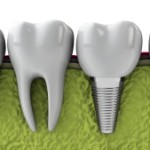 Some people may think that your gums will just break down as you get older, in the same way that other body tissues deteriorate with age. Although your risk of this condition does increase with age, gum disease is far from inevitable. You can maintain healthy gums well into your 80s and 90s if you make the effort to take good care of your smile.
Some people may think that your gums will just break down as you get older, in the same way that other body tissues deteriorate with age. Although your risk of this condition does increase with age, gum disease is far from inevitable. You can maintain healthy gums well into your 80s and 90s if you make the effort to take good care of your smile.
Unfortunately, patients who perceive periodontal disease as unavoidable due to aging may not pursue gum disease treatment. This is a mistake, as well. Effective interventions are available, and obtaining treatment can help to protect your oral health for many years.
Older adults should be aware of the signs and symptoms of gum disease to know when they might need to consult with a dentist or a periodontal specialist. You should monitor your gums regularly for issues like redness, swelling or bleeding, any of which may indicate some form of gum disease. More severe symptoms like pockets between the gums and the teeth or loosening of the teeth may suggest a more advanced stage of the condition.
After you’ve had successful treatment for gum disease, you should still plan to follow-up with a periodontist for ongoing monitoring. This will give you an opportunity to catch a recurrence in its earliest, most treatable stages.
Some conditions that are aging-related can have an effect on your ability to maintain your oral hygiene routine. For example, arthritis can make it more challenging to hold your toothbrush at the right angle or to floss thoroughly. Your periodontist can make suggestions of ways that you can adjust or alter your technique to overcome any impairments that may affect your ability to maintain your smile.
Although gum disease is not inevitable in older adults, it can happen. It’s important to monitor your gums for signs of concern and seek treatment for the condition when necessary. If you’ve developed any problems with your gums, contact PerioNYC at 212-756-8890 to schedule an evaluation and learn about your treatment options.


